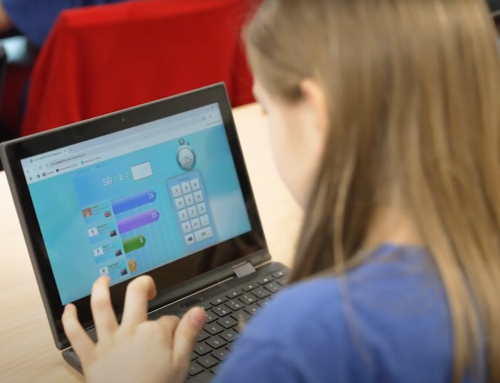When it comes to creating homework, mathematics teachers draw the short straw. A single worksheet often requires the creation of 10-20 questions, and original word problems don’t write themselves.
This makes it all the more frustrating when we don’t get the student engagement we hoped for.
But it’s not a question of doing more. Transforming homework from simply ‘doing’ mathematics to exploring and understanding it will result in more engaged students and more meaningful learning experiences. And it doesn’t have to cost you extra time.
Here’s how you can rethink the way you, and your students, approach mathematics homework for good.
Bring mathematics homework to life by linking it with the real world
A phenomenal homework activity focuses learning around a real-world mathematical phenomenon. Instead of slaving over a worksheet’s worth of sums or word problems, you only need to come up with one real world mathematics question that is accessible for all students. For example:
- What can a snowflake teach us about symmetry?
- Why do bees use hexagons to structure their honeycombs?
- What are the world’s tallest buildings?
- What’s the golden ratio? Where can we find it?
Have students report back their findings and speculations in the following lesson, and you suddenly have a real-world grounding for higher-order concepts – measurement, geometry, statistics, you name it!
Use homework to explore mathematics, instead of just reviewing it
Discovery is as important as practice and fluency, and homework is an opportunity to broach new content in a way that piques student interest for what is to come.
Invite students to explore new ideas in a way that encourages active learning and ownership of the material by [doing the thing]:
- YouTube videos
- Games
- Apps
- Books and stories
- Mnemonics (memory aids).
These can then be compiled on a class blog or other online platform. This encourages collaboration and autonomous learning and provides you with an invaluable resource that you can use for student support.
For senior students, you could set a homework task that invites them to research the real-life applications of a mathematical theory, or the way that it intersects with other disciplines. What does mathematics have to do with computers, biology, logic or art? You don’t need all the answers — they’ll find things that teach you a thing or two yourself!
These sorts of activities aren’t a substitute for revision and curriculum delivery, but they give an incredible return on student engagement.
Put the HOME back in mathematics homework
When we set activities for home that aren’t different to school activities, we miss the opportunity to let students explore mathematics in a new environment.
Great homework puts an emphasis on the ‘home’ aspect by integrating mathematics with students’ daily lives. For example, your homework could be to:
- Create a budget for shopping, which applies arithmetic skills
- Cook a recipe using measurements and ratios
- Create an after-school activity planner by dividing the afternoon into blocks of time
- Reorder a space in the house or bedroom by grouping objects according to size, quantity, or shape.
Inclusive and accessible home activities also invite parents to get involved in their child’s mathematics learning. This bolsters student engagement and learning, while also demolishing the myth that mathematics is a solitary and book-bound pursuit.
Use technology to take your mathematics homework to the next level
The best mathematics homework is differentiated and followed up with timely feedback, but this is easier said than done when you consider all the other items on your to-do list.
EdTech programs lighten the load by streamlining the processes of differentiation, grouping marking and finding resources. For example, Mathletics uses a placement test to set a unique homework path for each student in your class, and its automated reporting allows you to assess individual progress at a glance.
Taking advantage of technology also means we free up unnecessary time spent on setting and assessing homework tasks, without sacrificing their quality. We’re then able to invest our efforts into the things that are most important: creating in-class experiences that inspire and support the students who need us.
Show students that you don’t just do mathematics — you live it
Use homework to help your students see that mathematics as more than just a subject. It’s a way of thinking and a powerful tool for understanding the world in which we live.







